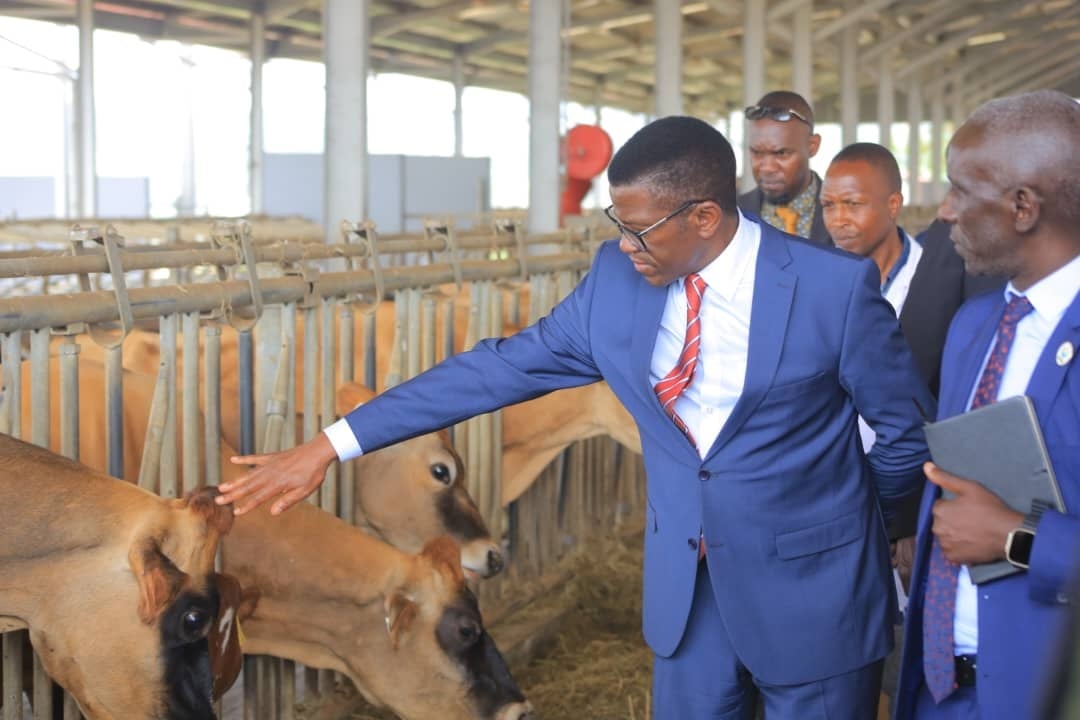Prime
Could your pigs be suffering from foot and mouth disease?

What you need to know:
- The main reason why FMD is not controlled effectively is because national vaccination against the disease and in all vulnerable livestock is not done consistently.
Foot and mouth disease (FMD) is a dreaded sickness of ungulates. These are animals that have hooves. For livestock, they include cattle, sheep, goats and pigs. FMD does not infect humans.
It is different from the human hand, foot and mouth disease (HFMD) that affects mainly children under five years.
Prevention
FMD is common in East Africa but the good news is that it can easily be prevented through diligent vaccination of all vulnerable livestock species.
The main reason why FMD is not controlled effectively is because national vaccination against the disease and in all vulnerable livestock is not done consistently.
In most cases, both public and private vaccination service is given when there is a disease outbreak. In such instances, the programme is done as ring vaccination.
Healthy animals within a specified radius from the outbreak farms are vaccinated while all the animals in the outbreak herds are left unvaccinated. The aim is to stop the spread of the disease.
Ring vaccination
While ring vaccination is recommended during an FMD outbreak, it leaves many animals open to infection. Thus when the FMD virus is introduced again, the unprotected animals become new centres of infection and spread the disease.
FMD is one of the diseases with far-reaching economic implications locally at the area of outbreak, nationally and internationally. Such diseases are called transboundary animal diseases (TADs).
When there is an outbreak of FMD, the attending veterinary doctor must report to the authorities immediately. The veterinary services carries out investigations and announces the outbreak if confirmed.
Quarantines
Such an announcement triggers a cascade of events that start with the placing of quarantine on all livestock movement from the county with affected animals to any other area nationally. Further, the DVS reports the outbreak to the World Organisation for Animal Health (WOAH).
Once the DVS reports, it follows that trade in animals and animal products from the county can only be done within the affected region to prevent spread of the disease to the rest of the country. In addition, all international trade with livestock and livestock products is stopped until the country is declared free of the disease.
Due to the trade implications of FMD, all suspected disease occurrences must be reported. It is an offence for any person, even a veterinary doctor, to pronounce the disease. Technically, a doctor who diagnoses FMD on a farm or other livestock facilities such as markets, holding grounds or a slaughterhouse can only treat the finding as a suspicion and report to the authorities for investigation and confirmation.
I found myself in a potential FMD outbreak situation this week. Dan called on phone last Sunday and reported he had a suspected FMD outbreak. The farm also had cattle, sheep and goats but only the pigs were affected.
I enquired if the animals were vaccinated against diseases. The farmer said he had not vaccinated any of his animals. He had been told vaccination should be done when there was an outbreak. He was also surprised to learn that even pigs should be vaccinated against FMD.
I agreed with Dan to visit the farm urgently, review the management practices and advise if the disease on the farm was FMD. I would also vaccinate all the healthy animals against FMD as a starting point.
Characteristics
According to Victor, the farm manager, some adult pigs were limping and unable to stand. Some weaner and growing piglets had wounds on the muzzle but not limping.
I visited the farm last Tuesday. First I reviewed the healthy animals comprising cattle, sheep and goats. There was no indication of FMD even in the animals that were on the same farm unit with the pigs. I vaccinated all the 572 animals.
In a disease situation, the best practice is to start with the healthy animals and uninfected facilities to minimise the chances of disease spread. While standard practice is not to vaccinate healthy animals in an infected herd, I have learned through experience that where the herds are large, it is possible to protect the uninfected animals by vaccinating if the disease is caught at the early stage in only a small part of the stock. This is because disease build-up takes time especially in animals under open grazing.
At the pig unit, I took the history of the outbreak of disease both from the manager and the workers before entering the piggery. By the time I finished taking the detailed disease information from the different sources, it was clear to me that FMD was not the problem.
You see, FMD is both dramatic and devastating to the animals. It spreads quickly in the herd affecting all ages of the animals. From the history I got, the disease was affecting the adult pigs causing lameness while the grower and weaner pigs had large wounds and swellings on the snouts.
My examination of the affected animals ruled out FMD. The adult pigs had severe feet injury and bacterial infection. It was caused by pressure and laceration by small pebbles jutting from the pen floors. I vaccinated the animals and advised on treatment. The floors should also be repaired.
The pigs with swellings and wounds on the snouts had a bacterial disease called atrophic rhinitis. I advised on its treatment and prevention.





